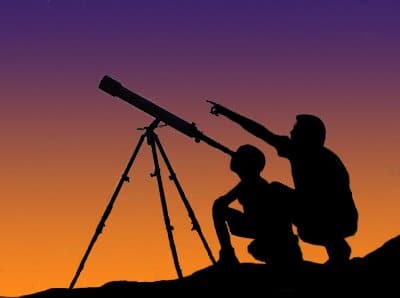
Geminid Meteor Shower Eye Of the Needle Credit: David Kingham Photography – @davidkingham
Geminid Meteor Shower 2021
The Geminid meteor shower is the most reliable and prolific meteor shower of the year.
This year, the Moon will be present on the evening of the Geminids peak drowning out the fainter ones with its light. but you will still see the brighter meteors.
The Geminids are well known for having plenty to see with the brighter meteors/ fireballs being spectacular! Read on to find out when, how, and more.

When to Watch
The Geminids begin on the 4th of December and peak on the evenings of the 13th/ 14th December. The shower finally ends on December 16th. (Dates are approximate)
Numerous bright Geminid meteors
Geminid rates can be in excess of 80 -120 shooting stars per hour at peak for those with clear dark skies.
Geminid meteors are also well known for being very bright and can leave long persistent trains.
If observing opportunities aren’t possible on the evenings of December 13th/ 14th, observers can usually see high meteor activity a day or so on either side of the peak. It may be possible to spot numerous Geminids a few days on either side of the peak.
How To Watch
The first thing I’m usually asked is: “What direction do we need to look?”
The simple answer is, there is no particular direction.
The reason for this is that the meteors appear randomly in any part of the sky.
Many sources make the mistake of pointing observers in the direction of the meteor showers radiant. This is because the radiant is the point of the origin of the shower – They radiate from there. All you have to do is get comfortable, look up and fill your gaze with sky.
For more info on how to watch and enjoy the Geminids, please see Watching Meteors – How to Watch and Observe Meteor Showers
As well as being the grand finale of 2020, the Geminids are special in another way. Unlike most meteor showers the Geminids originate from an object known as 3200 Phaethon. Thought to be an asteroid, not a comet.
Geminid Meteor Shower 2020 – Meteorwatch
To celebrate this highly enjoyable event there will be the Geminid Meteorwatch. Anyone with an interest in the night sky can join in on Twitter, Facebook.
The event will be an excellent opportunity to learn, share information, pictures and more whatever your level of interest and will run for a few days. All you need to do is follow along using the #Geminids, #meteorwatch #Geminid or #geminidmeteorshower hashtags.
As well as the wealth of information shared on Twitter and Facebook etc, there are helpful guides available on meteorwatch.org so you can get the most out of your meteorwatch.
You don’t need a telescope or anything, just your eyes and a little bit of patience to see Geminid shooting stars.
Good luck

Geminid Meteor Shower 2014
Watching Meteors – How to Watch and Observe Meteor Showers










Hi when is this happening please and what time
All the info is in the article
will there be an uptodate notification every evening through from the 4th to the 16th December on best viewing directions I live not far from Teggs Nose off the Buxton road and have noticed over last couple of years telescopes galore and very friendly people always able to give you advice and help. ME AT 69 sometimes needs some technical stuff and jargon explaining cheers in anticipation from all that are able to do that for me and the wife
Yes, there will be regular updates with special emphasis on the evening of the peak or around it depending on weather.
In the space of 15 minutes I saw three meteors shoot across the sky – quite spectacular. West Kilbride, North Ayrshire, had a very clear night and visibility enhanced by lack of obv moonlight.
Which part of the sky should we be looking at? NSEW?? We suffer badly from light pollution to the south and east, which often affects night observations.
Any part of the sky, there’s a link on how to observe meteors in the article.
You need to correct some errors on this website:
“Peak is on the evening of the 13th/ 14th of December.”
*** peak in 2015 is actually on the afternoon of Dec 14, so Dec 13-14 and 14-15 should both be good from the UK.
“(fainter meteors may be missed due to the gibbous Moon in the small hours).”
*** there is no gibbous Moon in the small hours – New Moon in 2015 is on Dec 11
“Geminid meteors are usually bright with long persistent trains.”
*** actually hardly any Geminids (only about 3%) leave persistent trains
Thank you for pointing this out Tony.
The post was recycled from the 2014 version and not all of the current edits were saved. They were basically the corrections you suggested.
Corrections have been added and now the post is up to date.
Many thanks for bringing this to our attention